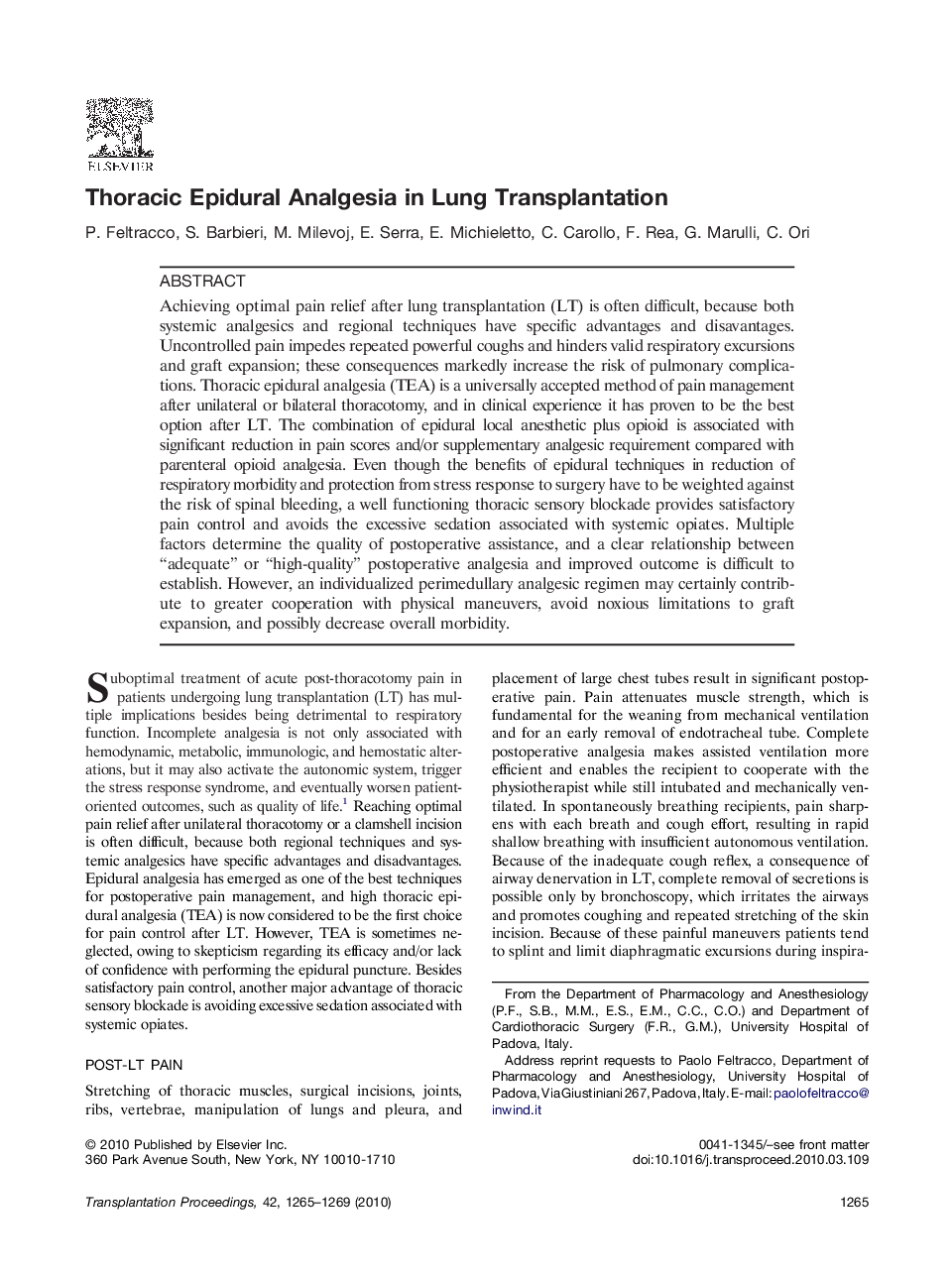| کد مقاله | کد نشریه | سال انتشار | مقاله انگلیسی | نسخه تمام متن |
|---|---|---|---|---|
| 4259643 | 1284574 | 2010 | 5 صفحه PDF | دانلود رایگان |

Achieving optimal pain relief after lung transplantation (LT) is often difficult, because both systemic analgesics and regional techniques have specific advantages and disavantages. Uncontrolled pain impedes repeated powerful coughs and hinders valid respiratory excursions and graft expansion; these consequences markedly increase the risk of pulmonary complications. Thoracic epidural analgesia (TEA) is a universally accepted method of pain management after unilateral or bilateral thoracotomy, and in clinical experience it has proven to be the best option after LT. The combination of epidural local anesthetic plus opioid is associated with significant reduction in pain scores and/or supplementary analgesic requirement compared with parenteral opioid analgesia. Even though the benefits of epidural techniques in reduction of respiratory morbidity and protection from stress response to surgery have to be weighted against the risk of spinal bleeding, a well functioning thoracic sensory blockade provides satisfactory pain control and avoids the excessive sedation associated with systemic opiates. Multiple factors determine the quality of postoperative assistance, and a clear relationship between “adequate” or “high-quality” postoperative analgesia and improved outcome is difficult to establish. However, an individualized perimedullary analgesic regimen may certainly contribute to greater cooperation with physical maneuvers, avoid noxious limitations to graft expansion, and possibly decrease overall morbidity.
Journal: Transplantation Proceedings - Volume 42, Issue 4, May 2010, Pages 1265–1269